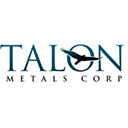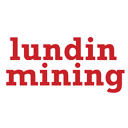Elbow's Up: Indonesia's Strategic Grip on Nickel Supply Drives Global Prices Higher as EV Sales Surge 30%

Nickel prices surge on Indonesian supply control and 30% EV sales growth; experts project $20,000/ton in 2025 as North American supply development accelerates.
- The nickel price has increased by nearly a dollar per pound (over $2,000 per ton), breaking out of a three-month range, with ore supply tightness in Indonesia and the Philippines driving the price movement.
- Indonesia is increasing royalty rates on nickel ore from 10% to 14-19% (depending on price levels), which will push the floor price of nickel higher as these costs flow through the supply chain.
- Global EV sales are up 30%, with China up 35% and Europe up 20%, countering previous concerns about EV demand; battery electric vehicles in Europe increased by 29% compared to hybrids at only 2%.
- North American EV production remains focused on nickel-based batteries, with only one LFP battery plant being constructed among all battery plants under development in the region.
- Canada Nickel Company is advancing three giant nickel deposits, with promising drilling results showing grades up to 0.6% nickel at Man West, while Talon Metals secured a partnership with Lundin Mining to develop Michigan properties near the Eagle Mine.
The nickel market has experienced a significant price surge, breaking out of its previous three-month trading range with an increase of nearly a dollar per pound (over $2,000 per ton). According to Mark Selby, CEO of Canada Nickel, this price movement follows a pattern he had anticipated since the beginning of the year:
"We were going to see an ore price squeeze in the first part of the year. Seasonally, we've seen it two of the past three years, and right on track, it has come through."
The fundamental factors driving this price movement stem primarily from supply constraints. Indonesia, which now controls approximately two-thirds of global nickel ore supply, and the Philippines, which is experiencing reduced production during its November-February rainy season, have created notable tightness in the supply chain. Selby points out that Philippine ore production drops by half during this period, and the squeeze in Indonesian ore production last summer "reduced stockpiles all through the supply chain."
This supply situation has been compounded by inventory reporting issues in China, with Selby asserting earlier suspicions about Chinese port stockpile reports:
"I asserted earlier in the year the Chinese were lying about their port stockpiles, and we've seen things drop."
This combination of actual physical supply constraints and potentially misleading inventory data has created conditions ripe for price appreciation.
Indonesian Influence and Strategic Control
Indonesia's growing influence over the global nickel market represents perhaps the most significant structural factor affecting prices. As Selby notes, the Indonesian government exercises control through two primary mechanisms. First, they manage ore licensing and production volumes:
"They flexed their muscles last summer, they took their foot off the brake at the end of last year."
This ability to throttle production gives Indonesia substantial market power.
The second mechanism is fiscal policy. Indonesia recently announced plans to increase royalty rates on nickel ore production from the current 10% to between 14-19%, depending on nickel prices. This change will have direct implications for the price floor, with Selby calculating: "You're looking at another basic $250 to $500 a ton of extra cost," which effectively raises the minimum viable nickel price.
These moves reflect Indonesia's strategic approach to maximizing value from its natural resources. As Selby explains,
"The Indonesian government realizes they have a finite resource. They want to maximize value for the Indonesian economy from that, and they're going to do whatever it takes."
This approach includes not just extraction, but also developing downstream processing capabilities.
It's worth noting that Chinese companies maintain approximately 75% beneficial ownership of Indonesian nickel operations, creating a complex geopolitical dynamic. Despite this foreign ownership, Indonesia is steadily increasing its capture of economic value from its resources through royalties, local employment, and development of local supply chains.
EV Market Growth: Debunking the Pessimism
Contrary to pessimistic narratives that dominated headlines a year ago, electric vehicle sales are showing robust growth globally. Selby points out the disconnect between perception and reality:
"If you read the headlines on the nickel market, you think nickel prices were at multi-decade lows rather than at twice the price they were during the prior peak, and the whole thing was 'EV sales are doomed, no one's buying EVs anymore.'"
The data tells a different story. Global EV sales in February were up 30% year-over-year, with China showing 35% growth and Europe 20%. Most notably, battery electric vehicles in Europe increased by 29%, while hybrid sales grew by only 2%, countering the narrative that consumers were shifting away from full battery electric models.
Selby attributes some of the previous negative perception to temporary market distortions caused by subsidy changes, particularly in Germany:
"The biggest issue in Europe, which had been the big driver in the West outside China, were showing negative sales growth at this time last year. The driver of that was the German government—Germany's the biggest car market in all of Europe—had removed subsidies for EV sales."
This created an artificial sales pattern of pre-subsidy expiration buying followed by a drop-off that has now normalized. Looking forward, Selby suggests the underlying growth rate for EV adoption is around 20-25%, which he characterizes as "a very robust number." He notes that governments will continue to support the transition, but ultimately, "it's consumers who buy cars," and the fundamental economics increasingly favor EVs:
"It's a lot cheaper to plug in your car than fill it up with gas. They're, in the long run, a lot cheaper to maintain."
Battery Chemistry and Nickel Demand
The specific battery chemistries being deployed in different vehicle segments have important implications for nickel demand. Selby highlights that in North America, where larger vehicles dominate the market, nickel-intensive batteries will remain the standard:
"In North America, because we sell mostly big cars, big cars and trucks, those are going to be all nickel batteries. Of all the battery plants that are under construction right now in North America, there is only one LFP battery plant being built."
Premium vehicle segments globally will also continue to favor nickel-rich batteries:
"If you're spending a big chunk of money on a Mercedes or BMW, you're not going to skimp on range to get a cheaper LFP battery option."
This indicates that nickel will maintain its position in high-performance applications, even as lithium iron phosphate (LFP) batteries gain share in entry-level and mid-range vehicles. An interesting technical development is the potential return to batteries with lower nickel content but operated at higher voltages:
"They're looking at moving back to 60% nickel battery and running it at a higher voltage, which gives you the equivalent good energy density that you would get with a pure battery running at a lower voltage."
This approach is particularly relevant for hybrid vehicles, which don't require the extended range of full battery electric models.
North American Supply Challenges and Opportunities
The development of North American nickel supply faces significant challenges, particularly in financing. Selby acknowledges the issue:
"The risk is in North American supply... Where nickel prices have been, we've seen very little new supply."
Traditional retail investment capital has diminished, and banks remain cautious about mining project risk profiles after several disappointments in recent years. However, strategic imperatives are creating new financing pathways. Selby points to two key drivers: end-user demand and government strategic interests.
"There are end users who need this nickel in this part of the world, and they want to see projects get built and will provide capital to get them built.”
Simultaneously, governments recognize the national security implications:
"Governments want these projects to get built... It's a national security issue. In the US, that's one of the few things Democrats and Republicans can actually agree on."
Recent regulatory changes in the United States may also accelerate development timelines. As Selby notes,
"Trump wiped out a whole bunch of environmental regulations earlier this week, so if there is a time to be able to actually think about building a new mine, this might be the chance to actually get it done."
Company Developments: Expansion and Partnerships
Several companies in the nickel sector are making significant advances. Talon Metals and Lundin Mining announced a partnership to develop nickel properties in Michigan near the soon-to-close Eagle Mine. Selby characterizes this as "great news for both Talon Metals and Lundin Mining and, again, for North American nickel." The arrangement allows Talon to "unlock the potential of those deposits without having to dilute their shareholders for their main project in Minnesota" while giving Lundin potential feed to extend the life of their nearby processing facility.
Canada Nickel Company reported continued success at their "three Giants" projects— Mann West, Reid, and Midlothian. Drilling at Mann West yielded the "highest grades to date... up to 0.6%," while the Midlothian property is showing consistent grades "up to 0.3%." The company expects to publish nine resource estimates by mid-year, which they believe will demonstrate that the Timmins camp contains "the world's largest nickel sulfide endowment."
Other players in the space are also advancing. Chalice Resources is simplifying their process flow sheet by eliminating the initially planned hydro-metallurgical plant in favor of producing two concentrates—a copper-PGM concentrate and a nickel-copper-PGM concentrate. While this approach reduces capital requirements, Selby notes it comes with trade-offs:
"Once you have a polymetallic nickel-copper-PGM where you want and need the value from all three materials, you're then playing into the hands of the existing smelters, so your payability terms are much lower."
Outlook for 2025: Supply Constraints and Strategic Positioning
Looking ahead to the remainder of 2025, Selby expresses optimism for nickel prices:
"We've seen the first leg up, and we think there'll be another squeeze higher through the year. [It would be] stupid for the Indonesians not to try and squeeze prices up to the $18,000 to $20,000 a ton range.”
Key indicators to watch include Indonesian ore prices, which will signal underlying supply tightness, and global stainless steel production numbers, which remain the largest demand driver for nickel. The tariff situation, while creating market uncertainty, may have beneficial side effects for Canadian producers:
"All the tariff news just means the Canadian dollar is going to be lower, which is helpful for us from an overall project economics perspective."
The nickel market appears poised for a period of structural supply constraints combined with steady demand growth, creating conditions for sustained price strength through 2025 and potentially beyond.
The Investment Thesis for Nickel
- Indonesian Supply Control: Indonesia controls approximately two-thirds of global nickel ore supply and is strategically increasing royalty rates from 10% to 14-19%, establishing a higher price floor of $15,000+ per ton.
- Seasonal Supply Constraints: The Philippine rainy season (November-February) reduces production by half annually, creating predictable supply tightness in Q1 that investors can anticipate.
- Resilient EV Demand: Global EV sales are up 30% with China at 35% and Europe at 20%, disproving pessimistic narratives; North American EV production remains committed to nickel-based batteries.
- Strategic Mineral Status: Governments in North America recognize nickel as a critical mineral with national security implications, creating funding opportunities outside traditional capital markets.
- Stainless Steel Demand: Beyond EVs, stainless steel production (the largest nickel demand driver) remains strong globally, providing a solid demand foundation.
- North American Supply Development: Recent regulatory changes in the US and strategic funding initiatives in Canada are accelerating the development timeline for North American projects.
- Actionable Strategy: Consider exposure to producers with established operations in stable jurisdictions, development-stage companies with government/strategic partner backing, and companies positioned in the North American supply chain.
- Price Target Potential: Industry experts anticipate nickel reaching $18,000-$20,000 per ton in 2025, representing significant upside from recent price levels.
- Timing Consideration: Q1 seasonal price strength has already manifested; consider establishing positions during any Q2 consolidation ahead of potential further price appreciation.
The nickel market is experiencing a fundamental shift marked by Indonesia's strategic control of global supply and resilient demand growth from both traditional sectors (stainless steel) and emerging applications (electric vehicles). Despite temporary fluctuations driven by subsidy changes, the EV market continues to expand at a healthy 20-25% annual rate globally. North American supply development faces financing challenges, but growing government recognition of nickel's strategic importance is creating new funding pathways. The market appears structurally positioned for sustained price strength, with industry projections targeting $18,000-$20,000 per ton in 2025.
Analyst's Notes




Subscribe to Our Channel
Stay Informed



























